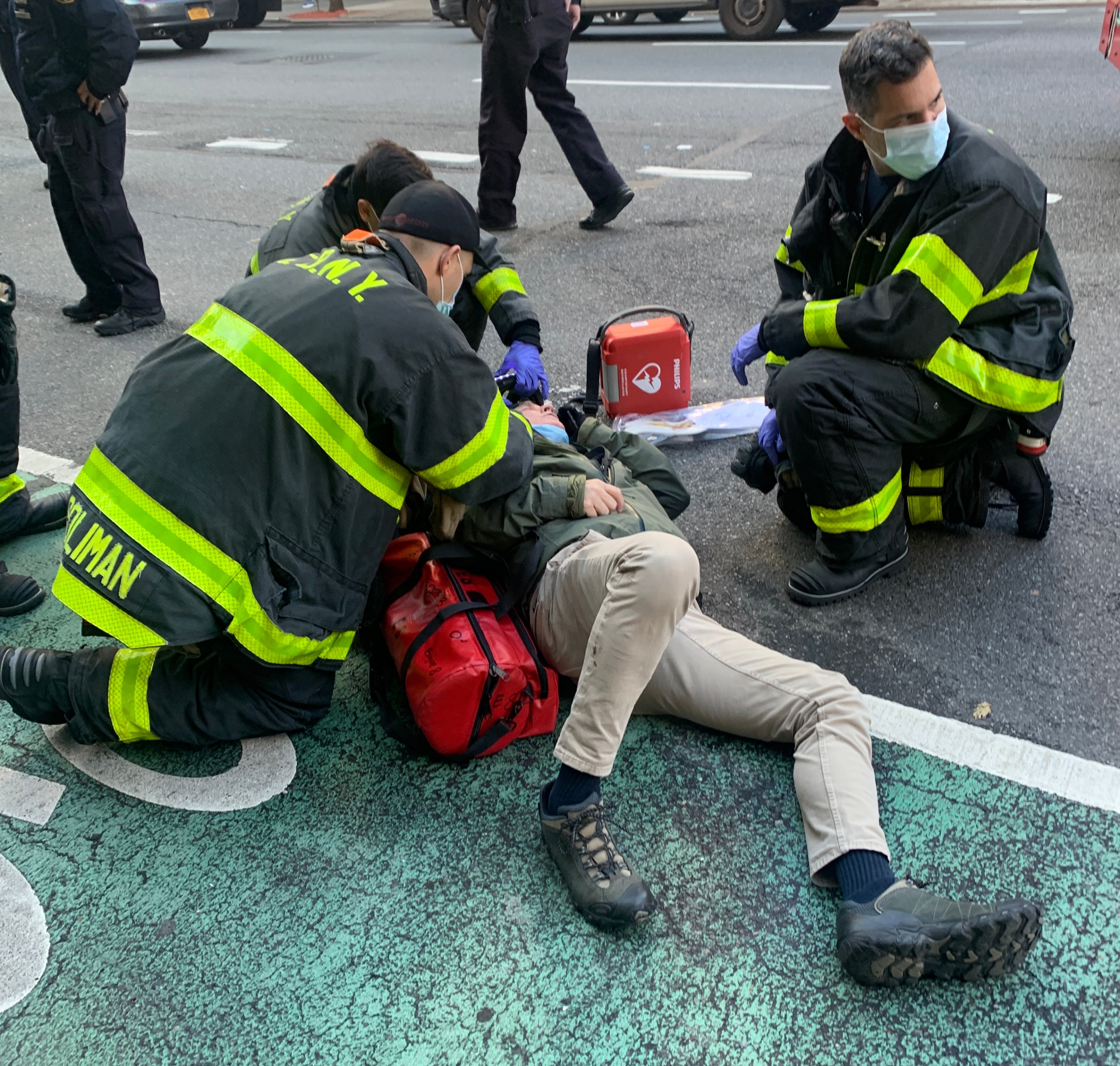Well, if you can't beat 'em, expand 'em.
A City Council hearing about a bold and innovative proposal to move the NYPD's Collision Investigation Squad into the Department of Transportation ended up exactly where its sponsors didn't want to be: on the defensive and almost begging for a compromise that would leave the unit in the NYPD and make it bigger — the very opposite of the goals of the year-long movement to cut the many tentacles that the NYPD has over many non-policing initatives.
Amid an onslaught of opposition from the city's law enforcement establishment, plus the DOT itself, neither the bill's sponsor, Ydanis Rodriguez, nor his Council supporters, ever really made the case in favor of shifting responsibility to DOT — a move that they previously championed because supporters believe it would result in investigations not just treating crashes as a one-time incident, but be part the process by which DOT and fixes dangerous roadways afterwards.

Instead, Rodriguez and company focused their efforts on pointing out that the 28-person CIS investigates a tiny percentage of serious crashes in the city.
In 2020, CIS responded to 374 crashes across the five boroughs — all of the 245 fatal crashes and 129 crashes with serious injuries. But in that pandemic year, there were 112,000 crashes, with 33,000 causing injuries and roughly 6,600 of those crashes considered serious ones. At that rate, CIS is investigating just 5 percent of serious crashes. Roughly one-quarter to one-third of CIS investigations lead to an arrest.
Those numbers were similar to the 2019 figures, when CIS responded to 349 crashes — all of the 220 fatal crashes, plus 129 crashes with serious injuries, according to NYPD Transportation Bureau Chief Kim Royster. But there were 201,000 crashes that year, more than 35,000 of which caused injuries. Again, CIS ended up investigating single-digit percentages of the most serious crashes in the city.
The Council has long sought to expand the CIS, albeit before a summer of protests over not only police brutality, but also the manner in which the $6-billion agency has ended up involved in so many aspects of city life where the NYPD had not traditionally operated. In 2019, the city Council offered the NYPD an additional $2 million to add 15 detectives to the squad — but then-Police Commissioner James O’Neill politely declined.
In the context of the "Defund the Police" movement, the NYPD was playing a cagey game of chess — first saying that CIS had to stay with the police department because the NYPD is the only agency that can do criminal investigations and then denying the need for the unit to expand. That put the bill's supporters in the position of advocating for a bigger NYPD because, at least, it would mean more investigations (and therefore more accountability for reckless drivers).
“We don’t have a serious approach to using enforcement to adding up to saving future lives. That's why the refusal to think about expanding the CIS investigation seems so short-sighted to me," said Council Member Brad Lander. "You could do twice as many investigations with twice as much staff. If CIS investigated twice as many crashes, wouldn't it be possible to have twice as large a database of reckless driving?"
I think we have a ways to go before they should be hedging like that. https://t.co/S9GJznjfZ7 pic.twitter.com/MEUGRltOgh
— ItsEasyBeingGreen (@Fresh_Kermit) February 24, 2021
That allowed Council Members Bob Holden and Kalman Yeger, who oppose the bill and have long resisted any efforts to rein in the NYPD, to pounce on the idea of expanding the CIS.
“The system seems to be working," said Holden, before an avalanche of testimony from crash victims and their families who said the system is the opposite of working. "Let's expand the police investigation of the accidents, which I'm all for." Holden used the hearing to criticize his colleagues for voting over the summer to "defund" the NYPD.
After the hearing, Rodriguez was already talking compromise, suggesting he could accept "a mechanism of equal level of collaboration" between DOT and NYPD over crash investigations — a significant backtrack from the bill itself, which seeks to give DOT "the primary responsibility for investigating, analyzing and reporting on all serious vehicular crashes."
“At the end of the day," Rodriguez told Streetsblog at, roughly, the end of the day, "our goal is to find a solution as to how we can effectively and efficiently review and investigate the hundreds of vehicular crashes that are yet to be resolved. The CIS is clearly in need of additional support, either through an increase in manpower or from the support of a city agency whose main objective is to make our roads safer for all New Yorkers. I strongly believe that the CIS, in coordination with the Department of Transportation, will become a more effective tool in decreasing the number of yearly crashes we see across the five boroughs."
On that matter, Rodriguez's bill also seems to be dead on arrival, as DOT Deputy Commissioner Margaret Forgione was allowed to suggest — virtually unchallenged by any Council Member — that her agency is already doing an outstanding job of collaborating with the NYPD crash investigators so that crash analyses lead to major changes in the streetscape. (New DOT Commissioner Hank Gutman was not involved in the hearing, which obviously got Rodriguez's attention.)
Forgione, for example, said that a DOT investigator goes to every crash scene either while it is still an active crime investigation or shortly after — but no council member asked about that process. And she also said that DOT evaluates "every CIS report" — but no council member referred back to one of the bill's stated goal: to remove the NYPD from crash analysis because CIS reports are often flawed, often exonerate killer drivers and rarely take into account road design.
DOT does collects crash data from the entire NYPD patrol force, which responds to the tens of thousands of crashes that don't meet the threshold of carnage that triggers a CIS investigation. She said that trove of information informs the department's decision-making process about crash hotspots (though it's unclear how that happens when NYPD officers don't even conduct full investigations, as we learned last year when Streetsblog watched an investigation from horrific start to unsatisfying finish.)
In the end, DOT can't do enough because CIS doesn't do enough. Indeed, Forgione admitted that DOT makes "changes" at about "50 percent of the fatal crash locations."
So do the math: From a pool of 201,000 crashes in 2019, 35,ooo of which resulted in injuries, with roughly 5,000 of them serious, the CIS investigated 349 crashes, of which 220 were fatal.
After those 220 fatal crashes, DOT made street safety improvements at the site of 110 of them.






